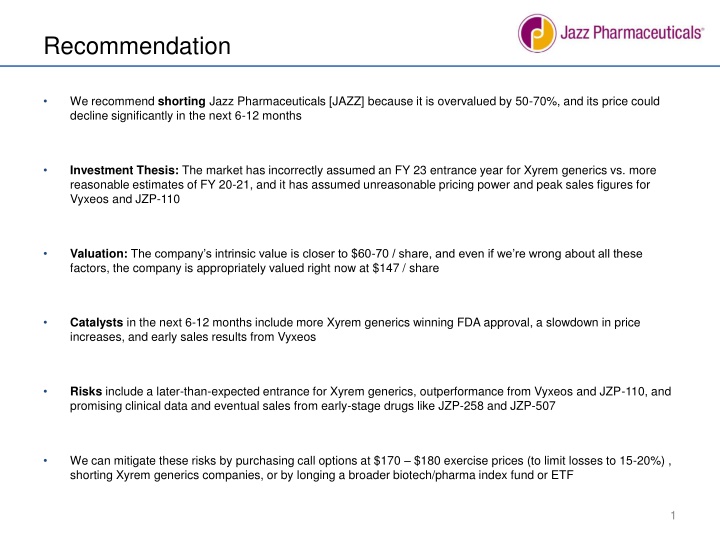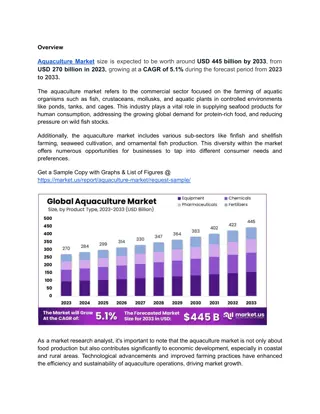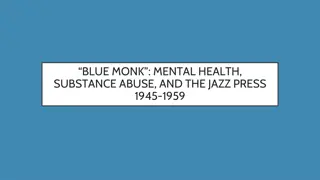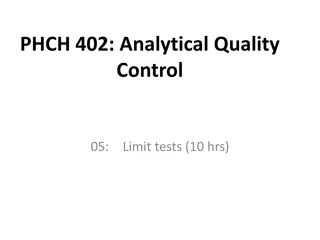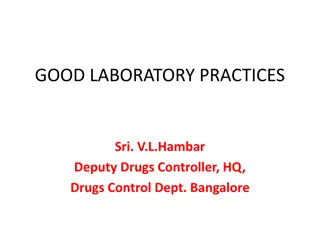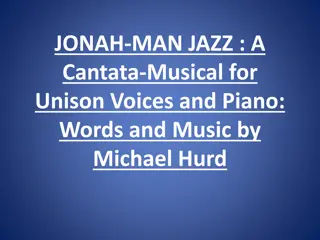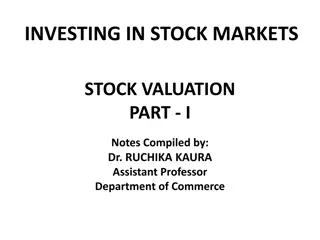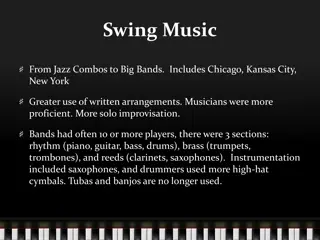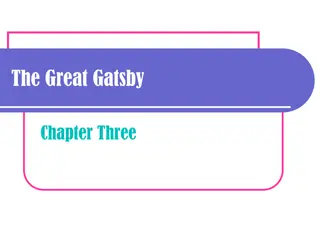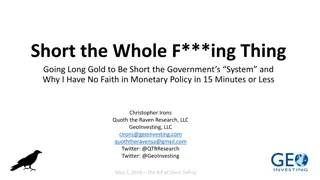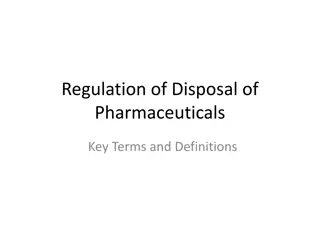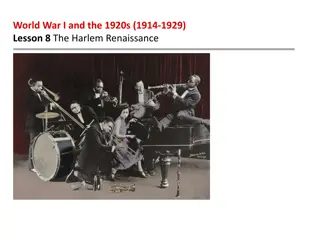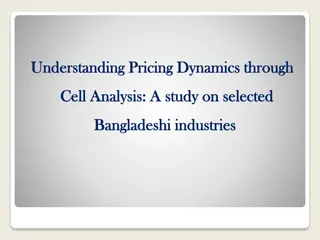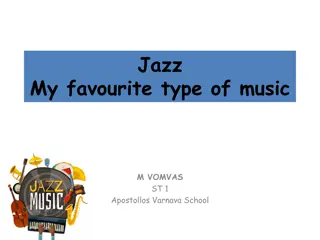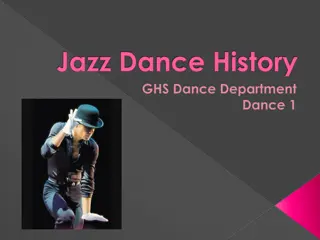Shorting Opportunity: Jazz Pharmaceuticals Overvalued by 50-70% - Analysis & Recommendations
Jazz Pharmaceuticals [JAZZ] is recommended for shorting as it is overvalued by 50-70%, with potential significant price decline in the next 6-12 months. The market's assumptions on Xyrem generics and pricing power are deemed unrealistic. The intrinsic value is estimated at $60-70/share, with current valuation at $147/share. Mitigate risks through call options, shorting Xyrem generics, or investing in a broader biotech/pharma index fund.
Download Presentation

Please find below an Image/Link to download the presentation.
The content on the website is provided AS IS for your information and personal use only. It may not be sold, licensed, or shared on other websites without obtaining consent from the author.If you encounter any issues during the download, it is possible that the publisher has removed the file from their server.
You are allowed to download the files provided on this website for personal or commercial use, subject to the condition that they are used lawfully. All files are the property of their respective owners.
The content on the website is provided AS IS for your information and personal use only. It may not be sold, licensed, or shared on other websites without obtaining consent from the author.
E N D
Presentation Transcript
Recommendation We recommend shorting Jazz Pharmaceuticals [JAZZ] because it is overvalued by 50-70%, and its price could decline significantly in the next 6-12 months Investment Thesis: The market has incorrectly assumed an FY 23 entrance year for Xyrem generics vs. more reasonable estimates of FY 20-21, and it has assumed unreasonable pricing power and peak sales figures for Vyxeos and JZP-110 Valuation: The company s intrinsic value is closer to $60-70 / share, and even if we re wrong about all these factors, the company is appropriately valued right now at $147 / share Catalysts in the next 6-12 months include more Xyrem generics winning FDA approval, a slowdown in price increases, and early sales results from Vyxeos Risks include a later-than-expected entrance for Xyrem generics, outperformance from Vyxeos and JZP-110, and promising clinical data and eventual sales from early-stage drugs like JZP-258 and JZP-507 We can mitigate these risks by purchasing call options at $170 $180 exercise prices (to limit losses to 15-20%) , shorting Xyrem generics companies, or by longing a broader biotech/pharma index fund or ETF 1
Company Background Industry: Specialty pharmaceuticals (Orphan drugs for narcolepsy, leukemia, and stem-cell complications) LTM Financials: $1.5 billion revenue; $759 million EBITDA Market Cap: $9.1 billion; Enterprise Value: $10.5 billion LTM Multiples: 6.8x EV / Revenue; 13.8x EV / EBITDA Products: Xyrem (75% of revenue) Erwinaze (~14%) Defitelio (~7%) Base Case Projections: 15-20% revenue growth falling to single digits post-generics 40-50% EBITDA margins Margins decline to 30-40% once Xyrem generics enter 2
Investment Thesis Our View Valuation Implications More likely to arrive in FY 20 or FY 21 than FY 23 Earlier entrance year would reduce company s implied share price by ~10% Threat of Xyrem Generics Due to ongoing lawsuits and generics companies seeking FDA approval Annual price increases well under 10% vs. double-digit percentage increases in past years Reduced rate of price increases across all drugs reduces implied share price by 20-25% Limited Price Increases Due to Brent Saunders pledge and government/regulatory scrutiny Risk-adjusted peak sales of $300- 400M for each vs. expectations of twice those figures Implied share price declines by ~20% with more modest assumptions for these pipeline drugs Reduced Potential of Vyxeos and JZP-110 Due to uncertainty around market size and JZP-110 improvements over Xyrem 3
Catalysts FDA Approval of Additional Xyrem Generics Multiple companies are currently targeting FDA approval, with possible litigation resolution in the coming year; for each earlier entrance year, the implied share price falls by ~5% #1 Reduced Ability to Increase Prices on Key Drugs Allergan CEO Brent Saunders pledged to limit annual price increases to 10% last year, which other companies adopted; significant pressure/scrutiny on the industry following cases like EpiPen, so 20-30% increases are unlikely #2 Early Sales Results from Vyxeos (and JZP- 110) If Vyxeos sales results come in below the $10-20M forecast for FY 17, the market may start expecting lower peak sales and with single-digit price increases, it will take much longer to grow sales by 20x #3 4
Valuation Summary At first glance, JAZZ seems appropriately valued in the Base Case: Jazz Pharmaceuticals Valuation -Range of Implied Share Prices Current Share Price: Public Company Comparables: LTM EV / Revenue: 2017-12-31 E EV / Revenue: 2018-12-31 E EV / Revenue: LTM EV / EBITDA: 2017-12-31 E EV / EBITDA: 2018-12-31 E EV / EBITDA: LTM Reported P / E: 2017-12-31 E Reported P / E: 2018-12-31 E Reported P / E: Precedent Transactions: 25th to Median LTM EV / Revenue: Median to 75th LTM EV / EBITDA: 1-Day Premiums: 1-Week Premiums: 1-Month Premiums: Discounted Cash Flow Analysis: 9.00% - 10.60% WACC, 0.50% - 2.50% Terminal FCF Growth Rate: $0.00 $50.00 $100.00 $150.00 $200.00 $250.00 $300.00 $350.00 $400.00 $450.00 $500.00 Implied Share Price It trades in-line with the multiples of the Public Comps, and is slightly below those of the Precedent Transactions But the DCF, with our own long-term views, tells a different story it produces implied share prices close to those from the other methodologies only in the Upside Case The implied share price in the Base and Downside Cases is a 50-70% discount to the current share price 5
Summary of DCF Assumptions Downside Base Upside Xyrem Peak Sales $1.5B in FY 19 $2.1B in FY 20 $3.8B in FY 22 Erwinaze Peak Sales $0.2B in FY 26 $0.3B in FY 26 $0.3B in FY 26 Defitelio Peak Sales $0.3B in FY 26 $0.4B in FY 26 $0.6B in FY 26 Vyxeos and JZP-110 Sales $0.4B total in FY 26 $0.8B total in FY 26 $1.6B total in FY 26 Operating Margins 40% falling to 25-30% 40% falling to 25-30% 40% falling to 25-30% WACC 10.0% falling to 7.5% 10.0% falling to 7.5% 10.0% falling to 7.5% Terminal Value 1.5% Terminal Growth 2.0% Terminal Growth 2.5% Terminal Growth Implied Share Price ~$48 ~$77 ~$157 6
DCF Output Sensitivities Even in the Upside Case, it seems unlikely that the company is undervalued: And in the Base Case, we need a substantially lower Discount Rate and higher Terminal Growth Rate for the company to be undervalued: 7
Key Risk Factors Risk #1: Late Entrance Year for Xyrem Generics: FY 23 rather than FY 20-21 boosts Jazz s implied share price by ~10% Risk #2: Vyxeos and JZP-110 Perform Above Expectations: Upside Case assumptions ($700-$800M in peak sales) applied to Base Case results in implied share price that s 15-20% higher Risk #3: Early-Stage Drugs Gain Positive Clinical Trial Data: If JZP-258 and JZP-507 perform at the potential of Vyxeos and JZP-110, that could add another $700M in revenue and boost the implied share price by 10-15% Worst-Case Scenario: If everything above came true and the company performed above our Upside Case, its share price might increase to ~$200 Recommended Hedges: Call options at $170 $180 exercise prices, or stop-loss or stop-limit orders at a similar range to limit potential losses to 15-20% Other Options: Could also short Hikma, Par, or other companies attempting to produce Xyrem generics, or long a broad biotech/pharma index fund or ETF to hedge against pricing and early-stage drug risk 8
Summary and Recommendations We Recommend SHORTING Jazz Pharmaceuticals At its current share price of ~$147, it is overvalued by 50-70% because the market misunderstands the threat from generics, the company s pricing power, and the potential of its pipeline drugs #1 Wide Divergence Between Valuation Methodologies Public Comps and Precedent Transactions indicate that JAZZ is appropriately valued; however, our 10-year DCF, even with optimistic long-term assumptions, shows it is almost certainly overvalued #2 Substantial Catalysts to Drive Down Price Within 6-12 Months Possible catalysts include more Xyrem generics winning FDA approval, a slowdown in the company s ability to raise prices, and disappointing early sales results from Vyxeos #3 We Can Hedge Against the Key Risks Fairly Easily We could purchase call options at $170 $180 exercise prices to limit losses to 15-20%, short generics competitors, or long broader biotech/pharma index funds or ETFs #4 9
